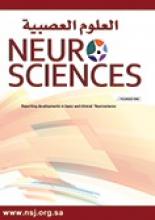Article Figures & Data
Tables
- Table 1
General descriptive statistics of the stroke patients, their relatives, and healthcare providers participating in the survey (N=50).
Variable Frequency (%) Gender Male 20 (40) Female 30 (60) Occupation/status Patient 13 (26) Patient’s relative 14 (28) Nurse 16 (32) Physician 3 (6) Others 4 (8) - Table 2
Level of satisfaction with the Robotic link survey, using Likert scale among 50 stroke patients, their relatives, and healthcare providers.
Variable Frequency (%) Was the interview useful? Agree 16 (32) Strongly agree 34 (68) The interview was not embarrassing Neutral 1 (2) Agree 18 (36) Strongly agree 31 (62) The picture and sound were clear Agree 14 (28) Strongly agree 36 (72) Information given by the neurologist was clear Neutral 1 (2) Agree 21 (42) Strongly agree 28 (56) The physical presence of the neurologist was not needed Disagree 2 (4) Neutral 2 (4) Agree 18 (36) Strongly agree 28 (56) I recommend the use of this technology Neutral 1 (2) Agree 12 (24) Strongly agree 37 (74) Overall Satisfaction after the interview Satisfied 20 (40) Very satisfied 30 (60)






